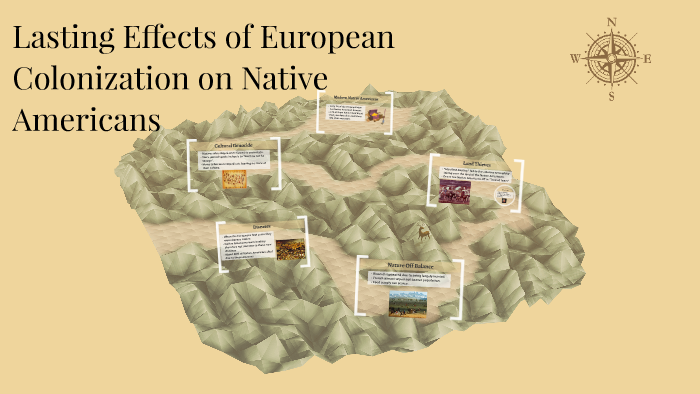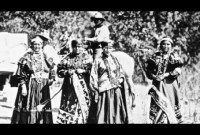
The Unfolding Catastrophe: European Colonization’s Profound Impact on Native American Tribes
When European sails first appeared on the horizons of the Americas in the late 15th century, they heralded not merely an age of exploration, but the dawn of an unprecedented catastrophe for the continent’s Indigenous inhabitants. What began as tentative encounters soon spiraled into a relentless conquest, permanently altering the demographic, cultural, economic, and political landscape of Native American tribes. The impact of European colonization was not a singular event but a protracted, multi-faceted process of dispossession, disease, and cultural decimation, the reverberations of which continue to shape Native American communities to this very day.
The Invisible Enemy: Disease and Demographic Collapse

Perhaps the most devastating, albeit often unintentional, weapon wielded by Europeans was disease. Native American populations had no immunity to the pathogens endemic to Europe and Africa – smallpox, measles, influenza, typhus, and bubonic plague. When these diseases arrived, they swept through communities like wildfire, often preceding direct European contact.
"Smallpox alone killed more Indians than all the wars ever fought between Natives and Europeans," asserts historian David Stannard in his harrowing book, American Holocaust. Estimates vary, but it’s widely believed that within a century or two of Columbus’s arrival, Indigenous populations plummeted by 80 to 95 percent. A continent once teeming with perhaps 10-18 million people, organized into hundreds of diverse nations, was reduced to a fraction of its former self. Entire villages were wiped out, social structures crumbled, and the sheer scale of death left survivors traumatized and weakened, making them even more vulnerable to subsequent European incursions. The loss of elders meant the loss of irreplaceable knowledge, traditions, and oral histories, creating a gaping wound in the fabric of tribal societies.
The Land Taken: Dispossession and the Erosion of Sovereignty
For Native Americans, land was not merely property to be bought and sold, but a sacred entity, the source of spiritual identity, sustenance, and cultural memory. Their relationship with the land was one of stewardship, not ownership. European colonists, driven by concepts of private property and manifest destiny, viewed the vast North American continent as an untapped wilderness ripe for exploitation and settlement. This fundamental clash of worldviews laid the groundwork for centuries of conflict and dispossession.
Initial treaties, often coerced or misunderstood, quickly gave way to outright seizure. The infamous Indian Removal Act of 1830, championed by President Andrew Jackson, epitomized this policy. It forcibly relocated Eastern Woodland tribes – the Cherokee, Choctaw, Chickasaw, Creek, and Seminole – from their ancestral lands in the southeastern United States to Indian Territory (present-day Oklahoma). The Cherokee’s forced march, known as the "Trail of Tears," resulted in the deaths of thousands from disease, starvation, and exposure. "I fought through the Civil War and have seen men shot to pieces and slaughtered by the thousands," recalled Private John G. Burnett, a soldier involved in the removal, "but I never saw anything that came anywhere near the suffering that I witnessed on the Trail of Tears."
The Dawes Act of 1887 further eroded tribal land bases by breaking up communally held reservations into individual allotments. The "surplus" land, often the most fertile, was then sold off to non-Native settlers. This policy was designed to dismantle tribal structures, force Native Americans into an agrarian, individualistic lifestyle, and free up millions of acres for white settlement. By 1934, Native American landholdings had shrunk from 138 million acres to 48 million, much of it arid and undesirable.
The Assault on Identity: Cultural Suppression and Forced Assimilation
Beyond land and lives, European colonizers launched a sustained assault on Native American cultures. Christian missionaries sought to convert Indigenous peoples, often condemning traditional spiritual practices as "pagan." Languages, rich repositories of ancestral knowledge and identity, were systematically suppressed.

The most insidious tool of cultural annihilation was the Indian boarding school system, which peaked in the late 19th and early 20th centuries. Children were forcibly removed from their families, often at a young age, and sent to distant boarding schools like the infamous Carlisle Indian Industrial School. The explicit goal, articulated by its founder Richard Henry Pratt, was "Kill the Indian, save the man." Students were stripped of their traditional clothing, had their hair cut, forbidden to speak their native languages, and punished for practicing any aspect of their culture. They were taught vocational skills and Christian values, designed to integrate them into white society.
This policy inflicted profound psychological and emotional trauma across generations. It severed family bonds, instilled shame in one’s heritage, and created a "lost generation" caught between two worlds, often belonging to neither. The legacy of these schools includes intergenerational trauma, identity confusion, and the tragic loss of fluency in many Indigenous languages.
Economic Disruption and Imposed Dependence
Native American economies were sophisticated and diverse, based on hunting, fishing, agriculture, trade networks, and sustainable resource management. The arrival of Europeans disrupted these systems irrevocably. The fur trade initially created a symbiotic relationship but soon led to overhunting and the decimation of animal populations, particularly the beaver and later the buffalo.
The near extermination of the American bison, driven by both commercial hunting and a deliberate military strategy to starve out Plains tribes, was a catastrophic blow. For tribes like the Lakota, Cheyenne, and Comanche, the buffalo was the cornerstone of their existence, providing food, clothing, shelter, tools, and spiritual connection. Its destruction left them impoverished, dependent on government rations, and vulnerable to military control.
Confined to reservations, Native Americans were often prevented from practicing their traditional livelihoods and forced into unfamiliar agricultural practices on marginal lands. The imposed economic system led to chronic poverty, unemployment, and a cycle of dependence on federal aid that continues to plague many reservations today.
The Enduring Legacy and Resilient Spirit
The cumulative impact of these forces created a cycle of poverty, health disparities, and social challenges that persist within Native American communities. High rates of unemployment, substance abuse, chronic diseases, and suicide are stark reminders of the historical trauma endured. Systemic injustices, from inadequate healthcare and education to environmental degradation on tribal lands, remain ongoing struggles.
Yet, to focus solely on the devastation would be to miss a crucial part of the story: the extraordinary resilience, adaptability, and enduring spirit of Native American tribes. Despite centuries of oppression, Indigenous cultures have not only survived but are experiencing a powerful revitalization.
Tribes are reclaiming their languages, reviving ceremonies, and rebuilding their nations. They are asserting their sovereignty through legal battles, advocating for environmental justice, and pursuing economic development on their own terms. Movements like the protests at Standing Rock against the Dakota Access Pipeline highlight the ongoing fight for land, water, and cultural survival.
Native American voices are increasingly heard in politics, arts, literature, and academia, challenging historical narratives and sharing their perspectives. "We are still here," declared Oglala Lakota activist Russell Means, a powerful testament to the unwavering presence and determination of Indigenous peoples. "We are the original caretakers of this land, and we will continue to fight for it."
The impact of European colonization on Native American tribes is a dark chapter in human history, characterized by immense loss and profound suffering. It is a story not confined to the past but one that continues to unfold in the present. Understanding this history is crucial not only for acknowledging past injustices but for fostering a more equitable future where the sovereignty, cultures, and inherent rights of Native American nations are fully recognized and respected. The journey of healing and reclamation is long, but the spirit of Indigenous resilience shines as a beacon of hope against the shadows of historical trauma.


